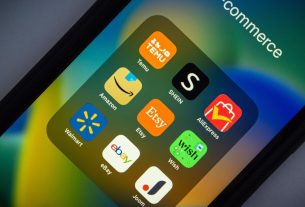While consumers are often encouraged to eat more seafood for its nutritional benefits, such as omega-3 fatty acids, sustainability and ethical concerns are also a growing factor in their purchasing decisions.
Consumers are increasingly prioritising seafood that is sustainably sourced, often preferring certified products such as those carrying the MSC and ASC labels (Marine Stewardship Council and Aquaculture Stewardship Council).
However, the rapid inflation of food prices following the COVID-19 pandemic actually led to a significant drop in at-home fish consumption in 2022.
Building trust
According to Professor Nives Ogrinc, head of the ISO-FOOD Centre at the Jožef Stefan Institute in Ljubljana, the largest research institute in Slovenia, traceability and eco-labels are becoming important factors in consumer choices.
Ogrinc is leading a four-year EU-funded research effort called FishEUTrust that has set out to boost consumer trust in fish supply chains in the EU – the world’s third-largest consumer market for seafood, after China and Indonesia.
“
People would like to know where their fish is coming from and if its production is environmentally friendly.
As part of this work, the FishEUTrust research team, primarily composed of leading research institutes and experts from 14 countries across Europe, has conducted consumer surveys in Denmark, Italy and Slovenia. They have also established five Living Labs – real-life test environments – in the Mediterranean Basin, the North Sea and the Atlantic Sea.
There, they study current practices and propose sustainable business models, as well as ways to protect local culinary heritage and encourage shorter food supply chains. One of the main takeaways from the surveys conducted was that consumers demand more information.
“People would like to know where their fish is coming from and if its production is environmentally friendly,” said Ogrinc.
Virtual shopping
To shed more light on this, researchers at the University of Bologna in Italy are developing a virtual shopping environment, including sensory information, to analyse how people select seafood.
Participants recruited from Italy, Denmark and Slovenia will taste products selected from a virtual table presenting four types of seafood, each in three different forms. They will choose one from each and put it in the virtual shopping cart. There will be no checkout or payment.
The four types of seafood are mussels, sea bream, turbot and rainbow trout. The criteria will be whether they come from the EU or not, from sustainable aquaculture, from a certified supply chain, and whether they are raw, with skin and bones, or cleaned, cooked and ready to eat.
The data collected will be used to analyse how people choose to purchase seafood and the factors that could encourage them to buy it more often, explained Ogrinc.
Transparent labelling
But this is where it gets complicated. Analysis of the survey results suggests that consumers have limited knowledge of aquaculture practices, often do not know where their seafood comes from, and find product labelling confusing.
Igor Koroušić, a restaurant owner from Croatia who is providing the project with his expertise on seafood supply chains and traceability, agrees that supply chains are not always transparent.
“We can see very often that certain types of fish we buy are probably mislabelled,” he said.
Along with his restaurant in Cavtat, near Dubrovnik, Koroušić also owns a seafood wholesale outlet and a high-end ready-meal company that supplies customers such as private airlines.
He pointed out that identifying seafood is even harder when it comes to frozen products.
“For example, there are hundreds of types of hake or cod, and not all of them are of the same quality, yet they’re all called hake or cod,” he said.
According to Koroušić, the origin of the fish consumers buy can also be unclear. Seafood is often caught in one country, but prepared and packaged in another – and then labelled as coming from that second country.
For restaurants, he said, these issues are not a huge concern. “If it’s good quality and the price is fine, we are happy,” he said.
Traceable seafood
But this is not the case for most European consumers, who want more traceability and transparency.
The FishEUTrust team is using the latest technology to help build consumer trust by guaranteeing the quality, safety and traceability of seafood products based on smart control systems, analysis of genetic material and completely traceable labelling.
In particular, they are developing sensors that will help improve food safety. These can be used to detect pathogenic bacteria, toxins and pharmaceuticals, as well as to test the freshness of seafood. This work is being conducted in cooperation with the “Iuliu Hațieganu” University of Medicine and Pharmacy in Cluj-Napoca, Romania, the University of Florence in Italy, the Brandenburg University of Technology in Germany and MicruX Technologies, an innovative technology company from Spain.
“
Certain types of fish we buy are probably mislabelled.
The researchers are also working on tools for analysing genetic information in seafood. The tools will improve traceability by providing information on the geographic origin of the produce.
Initially working with sea bream, a type of white fish, the team hopes to be able to identify where the fish came from and whether they were caught in the wild or farmed, explained Ogrinc.
These new technologies will make it possible to ascertain the carbon footprint of different types of seafood and provide information on the nutritional value of wild and farmed sea bream from different locations.
Seafood passports
With an eye to improving the information available to consumers, the research team is developing “digital passports” for seafood products so that shoppers can access the relevant information at a glance.
Product passports will be supported by an integrated traceability system using QR codes, smart labels, and blockchain technology. By scanning a QR code or interacting with a smart tag, consumers will be able to verify the seafood’s entire journey – from catch or farm to processing, distribution, and final sale. Blockchain ensures that each step in the supply chain is securely recorded and tamper-proof, enhancing transparency and consumer confidence.
Additionally, IoT sensors and cloud-based platforms will provide real-time tracking of seafood products, monitoring temperature, freshness and transportation conditions. This digital infrastructure will not only strengthen food safety, but also facilitate seamless integration with AI-powered tools for supply chain optimisation and fraud detection.
It has yet to be decided exactly what information will be included in these passports. However, the system is expected to provide key details such as geographic origin, supply chain history, carbon footprint, environmental impact and nutritional value.
“Our evaluations of consumer behaviour will tell us more about consumer preferences and what information they want to see,” said Ogrinc.
Research in this article was funded by the EU’s Horizon Programme. The views of the interviewees don’t necessarily reflect those of the European Commission. If you liked this article, please consider sharing it on social media.



